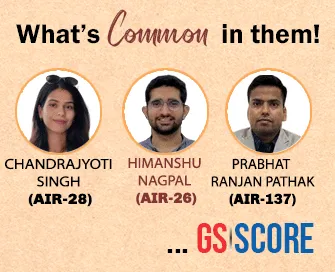

28th May 2025 (13 Topics)
Mains Issues
Context
On May 27, 2025, several containers from a sunken Liberian-flagged cargo ship began washing ashore along Kerala's coast, particularly in Thiruvananthapuram, Kollam, and Alappuzha districts. The incident has raised serious concerns regarding chemical spills, marine pollution, and the livelihood disruption of fishing communities. The presence of hazardous cargo, such as calcium carbide, poses significant environmental and public health risks.
Nature of the Maritime Incident
- Shipwreck Details: A Liberian-flagged vessel sank off the Kochi coast, reportedly carrying over 640 containers, including 13 with hazardous chemicals such as calcium carbide, known to release acetylene gas when in contact with water.
- Geographic Spread: At least 29 containers washed ashore across Kollam, Alappuzha, and Thiruvananthapuram, with Varkala and Chirayinkeezhu taluks reporting four additional containers.
Public Health and Environmental Concerns
- Chemical Spill Risk: Containers reportedly included calcium carbide, which can produce highly flammable acetylene gas, posing risk of explosion, inhalation toxicity, and marine contamination.
- Oil Spill: The vessel was carrying over 450 metric tonnes of diesel and furnace oil, leading to a significant marine oil spill. Oil is spreading through the coastal ecosystem, threatening marine life and biodiversity.
Impact on Local Livelihoods
- Fisheries Disruption: Fishing communities, particularly in Thiruvananthapuram, have reported fear over chemical contamination of water, resulting in market rejection of seafood, endangering livelihoods and food security.
- Social Anxiety and Economic Insecurity: Local residents are wary of seafood consumption, and tourism-dependent micro-enterprises (tea stalls, beach vendors) are facing reduced footfall, leading to economic uncertainty.
Administrative and Legal Response
- Public Safety Measures: Police and Coast Guard officials have cordoned off container zones, prohibiting access within 200 metres, and issued public advisories against touching debris or containers.
- Customs and Surveillance: The Customs Department, in collaboration with the Indian Coast Guard and Marine Preventive Units, is conducting shoreline surveillance and monitoring the situation.
- Legal Provisions Invoked: Authorities have cited laws prohibiting unauthorised removal or pilferage of non-duty-paid goods, and coordinated removal procedures have been initiated with customs clearance.
Way Forward:
- Strengthen Coastal Surveillance Systems: Enhance Automatic Identification Systems (AIS) and real-time cargo tracking for all commercial ships approaching Indian waters.
- Mandatory Cargo Disclosure and Classification: Enforce compulsory real-time disclosure of all hazardous cargo through Port State Control regulations under International Maritime Organization (IMO)
- Integrated Coastal Disaster Response Plan: State and central disaster management agencies must develop and periodically update a Coastal Hazard Response Framework, integrating NDRF, SDRF, Customs, and Environmental Agencies.
- Livelihood Compensation and Environmental Monitoring: Launch scientific water quality assessments, provide temporary fishing bans with financial compensation, and establish mobile health units for affected coastal populations.
- Review of Chemical Container Transport Policy: Revisit the Merchant Shipping Act and rules under the Environment (Protection) Act to improve handling, labeling, and movement of hazardous cargo in maritime logistics.
Calcium Carbide
Indian Coast Guard (ICG)
Marine Pollution under UNCLOS
|
PYQ:Coastal sand mining, whether legal or illegal, poses one of the biggest threats to the environment. Analyse the impact of sand mining along the Indian coasts, citing specific examples. (2018) |


Mains Issues
Context
Recent medical observations by leading practitioners highlight a persistent and overlooked challenge in India’s maternal health system — undiagnosed and untreated anaemia among women prior to conception. Despite notable improvements in maternal mortality, the prevalence of anaemia among women of reproductive age poses serious threats to maternal and neonatal outcomes.
Magnitude of the Problem
- Prevalence of Anaemia: Over 57% of Indian women aged 15–49 suffer from anaemia (NFHS-5, 2019–21).
- Preconception Phase Neglect: Public health interventions have largely focused on pregnancy and childbirth, ignoring the preconception phase critical for maternal and fetal health outcomes.
Consequences of Preconception Anaemia
- Adverse Pregnancy Outcomes:
- Preterm birth
- Low birth weight
- Preeclampsia
- Postpartum haemorrhage
- Increased maternal and perinatal mortality
- Systemic Underdiagnosis:
- Symptoms like fatigue and weakness are often normalized or ignored, delaying diagnosis.
- Lack of regular screening during adolescence and pre-marital stages.
Policy and Programmatic Gaps
- Focus Skewed Towards Antenatal Care (ANC):
Current public health policies emphasize ANC over preconception health. - Implementation Gaps in Anaemia Control Programmes:
- Anaemia Mukt Bharat (AMB) remains pregnancy-centric.
- Low community awareness and weak adolescent engagement in interventions.
Need for a Paradigm Shift
- Reframing Public Health Discourse: Move from “Are you ready for motherhood?” to “Is your body ready for pregnancy?”
- Lifecycle Approach to Women’s Health: Focus on early adolescence to preconception as part of a continuous care framework.
- Strengthening Primary Health Systems: Integration of haemoglobin testing into routine health checkups for girls and women from adolescence.
Way Forward:
- Integrate Preconception Care in RMNCH+A Framework: Add specific targets for anaemia screening and Iron-Folic Acid (IFA) supplementation in pre-marital and pre-pregnancy
- Mandatory Haemoglobin Check-ups at Adolescent Level: Institutionalize school-based anaemia testing and weekly IFA supplementation.
- Community-Level Awareness Campaigns: Utilize ASHA, ANM, and Anganwadi workers to raise awareness about pre-pregnancy health.
- Strengthening Data Systems: Implement real-time anaemia tracking dashboards using Health Management Information Systems (HMIS).
- Link Anaemia Management with POSHAN Abhiyaan & School Health Programme: Converge nutrition, hygiene, and deworming strategies for holistic anaemia prevention.
Anaemia
Anaemia Mukt Bharat (AMB)
Maternal Mortality Ratio (MMR)
|
PYQ:"The need for cooperation among various service sectors has been an inherent component of India's health service system." Examine the role of the 'Ayushman Bharat' Scheme in this context. (2019) |


Mains Issues
Context
Recent developments around India-Pakistan tensions and the legal-political controversies following dissenting voices expose the erosion of India’s pluralistic nationalism. The current trend toward conflating nationalism with rigid uniformity and suppressing democratic freedoms is threatening the legacy inherited from the freedom struggle. This debate has gained currency amid growing concerns over rising jingoism, shrinking space for dissent, and rising majoritarian narratives.
Backsliding of Indian Nationalism
- Indian nationalism has shifted from a rich, inclusive legacy to an imitative nationalism that mirrors exclusionary models (German fascism, Israeli nationalism, Hindu Pakistan analogy).
- This nationalism prioritizes national interest over citizens’ rights, curtailing dissent and freedom of expression.
Suppression of Democratic Freedoms in the Name of National Interest
- The Ali Khan Mahmudabad case exemplifies the judiciary and legal fraternity sidelining constitutional rights.
- Dissent during conflict is equated with anti-nationalism, breaking the tradition where leaders like Jayaprakash Narayan and Atal Bihari Vajpayee upheld both nationalism and democratic accountability.
Erosion of Democratic Accountability
- Government and the ruling party becoming synonymous with the nation undermines checks and balances.
- Criticism of government policies or questioning leadership is delegitimized as “anti-national”.
From Unity to Uniformity: The New Nationalism
- Diversity of ideology, culture, and region is demonized as “anti-national”.
- Internal dissent or minority concerns are labeled divisive, weakening India’s pluralistic fabric.
- Historical figures like Sardar Patel are recalled to emphasize integration without suppressing differences.
Legacy of Indian Nationalism
- Indian nationalism was characterized by “belonging without othering” — promoting unity without manufacturing enemies.
- Opposed colonialism as a system, not targeting countries or ethnic groups.
- Encouraged accommodation of multiple languages, religions, and regions, fostering a complementary Indian identity.
- Rejected European models demanding uniformity; embraced democratic debate on nationhood.
Contemporary Nationalism’s Failures and Consequences
- The new nationalism fuels othering and internal polarization.
- It fails to address genuine internal conflicts (e.g., Manipur, inter-state water disputes).
- Focused obsession with Pakistan reduces India’s diplomatic space and strategic partnerships.
- Unable to confront larger challenges like China’s expansionism or global diplomatic pressures.
Shared Responsibility and the Way Forward
- The contemporary nationalist crisis is not solely the ruling party’s fault.
- The post-independence liberal, secular elite’s detachment from emotional and cultural nationalism ceded space to narrow, jingoistic forces.
- Reclaiming India’s pluralistic nationalism is crucial — it demands political will and intellectual leadership to revive inclusive belonging and democratic accountability.
PYQ:"In a diverse country like India, to what extent can nationalism be an instrument of integration? Discuss with examples." (2020) |


Mains Issues
Context
A Trump-linked firm, World Liberty Financial Inc. (WLFI), has entered into a strategic cryptocurrency partnership with Pakistan, signaling Islamabad’s digital pivot and prompting concerns in India over geopolitical and financial ramifications in the absence of a national crypto strategy.
Trump’s Crypto Push, Pakistan’s Digital Pivot & India’s Strategic Dilemma
Emergence of the US-Pakistan Crypto Nexus
- Trump's Strategic Shift on Crypto: The second Trump administration has pivoted towards aggressive promotion of cryptocurrencies, reversing earlier skepticism. Key actions include:
- Issuance of two executive orders bolstering national blockchain strategy.
- Establishment of a Strategic Bitcoin Reserve.
- Creation of a US Digital Asset Stockpile.
- WLFI-Pakistan MoU: WLFI, with ties to the Trump family, signed an MoU with the newly formed Pakistan Crypto Council. Key objectives:
- Promoting financial inclusion through blockchain.
- Monetising rare earth assets via digital tokens.
- Establishing stablecoins for trade and remittance facilitation.
- Positioning Pakistan as a regional crypto hub.
Pakistan’s Crypto Strategy: Intent and Instruments
- Institutional Reforms: Pakistan appointed Bilal bin Saqib as crypto advisor to the PM and head of the Pakistan Crypto Council.
- Diaspora Diplomacy: Pakistan’s diaspora engagement, particularly in the US, is being leveraged to push crypto diplomacy and revive ties with the Trump administration.
- Economic Potential: Despite weak economic fundamentals, Pakistan estimates a domestic crypto user base of 25 million and a market value of $2 billion.
India’s Policy Vacuum on Cryptocurrencies
- Incoherent Regulatory Approach: India taxes crypto assets (30% capital gains, 1% TDS) but lacks a formal regulatory framework.
- Judicial Concerns: The Supreme Court, in a crypto fraud case, flagged the risks of policy ambiguity and legal vacuum.
- Missed Strategic Opportunities: India has the largest crypto user base globally (100+ million), yet there is no coordinated effort toward regulation or technological adoption.
Geopolitical and Security Implications
- Cross-Border Terror Financing Risks: Cryptocurrencies can be exploited for illicit flows, terror financing, and money laundering — especially without central bank oversight.
- Digital Strategic Leverage: Just as Pakistan leveraged nuclear technology to alter South Asian security dynamics, crypto could offer it similar asymmetric advantages if India remains passive.
- US Dollar Supremacy through Digital Means: Trump's strategy to back dollar-linked stablecoins while banning CBDCs aims to maintain US monetary dominance — with geopolitical implications for India and other regional economies.
Way Forward:
- Develop a National Crypto Policy: Draft a comprehensive law covering crypto asset classification, taxation, KYC/AML norms, investor protection, and innovation promotion.
- Set up a National Blockchain Innovation Council: Include members from RBI, SEBI, MEITY, NITI Aayog, and private sector experts to design and implement a national digital asset strategy.
- Leverage India’s Tech Diaspora: Engage Indian-origin innovators and entrepreneurs in the crypto and fintech sectors globally to build partnerships and influence digital policy norms.
- Enhance Cross-Border Crypto Surveillance: Strengthen regulatory coordination with FATF, Interpol, and G20 financial task forces to monitor and curb crypto misuse.
- Accelerate CBDC Deployment: While Trump’s US rejects CBDCs, India should fast-track the RBI’s Digital Rupee to improve financial inclusion and digitise payments securely.
PYQ:“What are the main objectives of India’s digital economy initiatives? Discuss the challenges in adopting digital payments and cryptocurrencies in India.” (2021) |


Prelims Articles
Context
On 26 May 2025, the Supreme Court Collegium, chaired by Chief Justice B. R. Gavai, recommended a major reshuffle involving the transfer of 21 judges across various High Courts in India and elevation of three High Court judges — N. V. Anjaria, Vijay Bishnoi, and A. S. Chandurkar — to the Supreme Court. The recommendations aim to address three existing vacancies in the apex court and enhance efficiency and regional balance in High Court functioning.
Supreme Court Collegium:
- The Supreme Court Collegium is a five-member body headed by the Chief Justice of India and comprising the four senior-most judges of the Supreme Court.
- It is responsible for the appointment and transfer of judges of the High Courts and recommendations for appointment to the Supreme Court.
- The Collegium system is a judicial innovation evolved through judgments in the Three Judges Cases (1981, 1993, 1998) and is not established by the Constitution or any statute.
Constitutional Provisions:
- Article 124: Appointment of Judges to the Supreme Court
- Article 217: Appointment and conditions of the office of High Court Judges
- Article 222: Transfer of a Judge from one High Court to another
- These powers are exercised by the President of India in consultation with the CJI and other relevant authorities.
PYQ:With reference to the Constitution of India, consider the following statements: (2019)
Which of the statements given above is/are correct?
|


Prelims Articles
Context
A landmark 2025 study published in Nature has identified the genetic basis of all seven traits studied by Gregor Mendel in pea plants, including the last unresolved ones—pod colour, pod shape, and flower position. Using advanced genomic tools, the discovery resolves a 160-year-old mystery and opens new avenues for crop improvement and sustainable agriculture
Historical Background:
- Gregor Mendel, an Austrian monk, conducted experiments on Pisum sativum (pea plant) and discovered seven discrete traits, establishing the Laws of Inheritance:
- Law of Segregation
- Law of Independent Assortment
- Law of Dominance
- His work, published in 1866, was ignored until rediscovered in 1900 by Hugo de Vries, Carl Correns, and Erich von Tschermak.
Seven Traits Studied by Mendel:
|
Trait |
Dominant |
Recessive |
|
Seed Shape |
Round |
Wrinkled |
|
Seed Colour |
Yellow |
Green |
|
Flower Colour |
Purple |
White |
|
Pod Shape |
Inflated |
Constricted |
|
Pod Colour |
Green |
Yellow |
|
Flower Position |
Axial |
Terminal |
|
Plant Height |
Tall |
Dwarf |
2025 Scientific Breakthrough:
- Key Unresolved Traits Now Decoded:
- Pod Colour: Linked to deletions near the ChlG
- Pod Shape and Flower Position: Associated with complex genetic regions and modifier loci.
- Technologies Used:
- Sequencing of 60 terabases of DNA across 697 pea accessions.
- Use of Genome-Wide Association Studies (GWAS) and Transcriptome Analysis.


Prelims Articles
Context
The Election Commission of India has announced the schedule for the biennial elections to fill eight Rajya Sabha seats—six from Tamil Nadu and two from Assam—as part of the periodic replacement of one-third of the members of the Upper House.
Rajya Sabha: Constitutional and Functional Status
- Constitutional Provision: Established under Article 80 of the Constitution.
- Maximum Strength: 250 members (currently 245).
- 233 elected by State and UT legislatures.
- 12 nominated by the President for contributions in literature, science, art, and social service.
Biennial Elections:
- Purpose: To replace one-third of the members who complete their 6-year term.
- Nature of House: Rajya Sabha is a permanent body; it cannot be dissolved.
Election Mechanism:
- Indirect Elections: Members are elected by the elected members of the State Legislative Assemblies using proportional representation by means of a single transferable vote (STV).
- Elections for UTs: Elected by members of electoral colleges (e.g., Delhi, Puducherry, J&K).
Bye-Elections:
- Held if a seat falls vacant before the end of the term.
- The member elected serves only the remainder of the original term.
Eligibility (As per Article 84):
- Must be a citizen of India.
- Must be 30 years of age or above.
- Must subscribe to an oath or affirmation under the Third Schedule.
- Must fulfill qualifications as prescribed by Parliament.
Grounds for Disqualification:
- Holding an office of profit under government.
- Being insolvent, unsound of mind, or a foreign citizen.
- Disqualified under the Tenth Schedule (anti-defection law).
Importance of Biennial Elections:
- Ensures continuity in parliamentary proceedings.
- Reflects the changing political composition of State Assemblies in Rajya Sabha representation.
PYQ:With reference to the election of the President of India, consider the following statements: (2017)
Which of the statements given above is/are correct?
|


Prelims Articles
Context
The Ministry of Commerce and Industry has reinstated RoDTEP benefits for Advance Authorisation holders, SEZs, and EOUs from June 1, 2025, via DGFT Notification No. 11/2025-26. This reverses the earlier withdrawal and aims to boost export competitiveness, especially for sectors like pharmaceuticals.
RoDTEP Scheme:
- Launched: January 1, 2021.
- Objective: To refund embedded taxes/duties not reimbursed under any other schemes (e.g., electricity duty, VAT on fuel, Mandi tax).
- Basis: Aligned with WTO norms; replaces MEIS (Merchandise Exports from India Scheme).
- Legal Framework: Section 5 of the Foreign Trade (Development and Regulation) Act, 1992.
Eligibility and Beneficiaries:
- Initially covered all sectors; later excluded AAs, SEZs, and EOUs from February 6, 2025.
- These exclusions have now been reversed, restoring parity among exporters operating under various schemes.
- Appendix 4RE (updated as per Finance Act, 2025) contains new HS code-linked rates.
Export Promotion Schemes Involved:
- Advance Authorisation (AA): Allows duty-free import of inputs for export production.
- Special Economic Zones (SEZs): Deemed foreign territory for trade operations; incentivized through fiscal concessions.
- Export-Oriented Units (EOUs): Set up for 100% export with duty-free inputs under EPCG/FTPs.
Importance for Pharma Sector:
- Major share of pharma exports are routed through AAs, SEZs, and EOUs.
- Withdrawal of RoDTEP benefits had increased operational costs and reduced price competitiveness.
- Reinstatement ensures a level playing field with Domestic Tariff Area (DTA) units and sustains India’s global pharma supply chain participation.


Prelims Articles
Context
May 31, 2025, marks the 300th birth anniversary of Ahilyabai Holkar (1725–1795), the revered ruler of the Holkar dynasty of Malwa. Known for her administrative acumen, military leadership, and patronage of temple architecture, her birth is being widely commemorated across India.
Dynastic and Historical Background:
- Ahilyabai Holkar ruled the Malwa region from 1767 to 1795, succeeding her father-in-law Malhar Rao Holkar after the demise of her husband Khanderao Holkar and her son Malerao.
- Her rule marks the zenith of the Holkar dynasty within the Maratha Confederacy.
Administrative Contributions:
- Rejected gender bias and ascended the throne as a female monarch, gaining support from the Peshwa.
- Known for dispensing justice, setting up daily public courts, and abolishing purdah for herself.
- Delegated military authority to Tukoji Rao Holkar and modernized her army by employing European expertise.
Architectural and Cultural Patronage:
- Rebuilt and renovated major Hindu temples, including the Kashi Vishwanath Temple (Varanasi) and Grishneshwar Temple (near Aurangabad).
- Made Maheshwar her capital, promoting textile crafts and initiating the Maheshwari saree
- Constructed wells, ghats, forts, and rest houses across India—from Somnath to Rameswaram.
Legacy and Recognition:
- Known as Punyashlok Ahilyadevi, venerated for her piety, vision, and inclusive governance.
- Honored through institutions such as Devi Ahilya Vishwavidyalaya (DAVV), Indore, and Ahilyabai Holkar Airport.
- Subject of literary works including Lokmata Ahilyabai and dramatized in plays like Matoshree and TV series Punyashlok Ahilya Bai.


Prelims Articles
Context
India’s first gene-edited sheep was developed by SKUAST-Kashmir using CRISPR-Cas9 technology, targeting the myostatin gene to enhance muscle mass by 30%. As no foreign DNA was introduced, the sheep is non-transgenic and aligns with India’s evolving biotech regulatory norms.
Institution Involved:
- The research was carried out at SKUAST-Kashmir under the leadership of Riaz Ahmad Shah (Dean, Faculty of Veterinary Sciences).
- SKUAST had previously cloned India’s first Pashmina goat (Noori) in 2012.
Technology Used:
- CRISPR-Cas9, a gene-editing tool enabling precise DNA modifications, was used.
- Adhered to international biosafety protocols, crucial for future regulatory clearance.
Scientific Basis:
- The gene edited was myostatin, which naturally limits muscle growth.
- Knockout (disruption) of this gene led to ~30% increased muscle mass—a trait seen in select European breeds like Texel, but absent in Indian sheep breeds.
Significance:
- The gene-edited sheep does not contain foreign DNA, distinguishing it from transgenic organisms.
- This makes it eligible for approval under India’s regulatory framework for gene editing, particularly under the 2022 notification of the Environment Protection Act (EPA), which exempts certain SDN-1 and SDN-2 gene-edited organisms from GMO classification.
- This is considered a historic milestone in Indian livestock genetics and biotechnology.
Future Applications:
- Creation of disease-resistant breeds.
- Facilitation of twinning and reproduction efficiency.
- Potential scaling in other livestock species.
Comparison to Recent Advances:
- Follows India’s release of the first gene-edited rice variety supported by the Union Ministry of Agriculture.
- Places India among global leaders in precision livestock breeding without transgenesis.
Ethical and Regulatory Relevance:
- Being non-transgenic, such developments may encounter less public resistance and smoother regulatory approval.
- Supports Make in India and Aatmanirbhar Bharat in biotechnology.
CRISPR Technology:Definition and Origin
Key Components
Mechanism of Action
Nature of Genetic Modification
Applications
|
PYQ:With reference to the recent developments in science, which one of the following statements is not correct? (2020)
|


Editorials
Context
India’s successful execution of Operation Sindoor in 2025, powered by indigenous defence technologies developed under the Make in India and Atmanirbhar Bharat initiatives, marks a major milestone in the country’s decade-long pursuit of self-reliance in strategic and high-tech sectors. This operation reflects India's shift from a defence importer to a credible global exporter, aligning with its vision of becoming a Viksit Bharat by 2047.
Industrial Resurgence and Strategic Manufacturing
- Make in India as a Policy Pivot: It is Launched in 2014, the Make in India campaign reshaped India’s industrial policy, aiming to position India as a global manufacturing hub through regulatory reforms, improved ease of doing business, and sectoral focus on electronics, automobiles, and defence.
- PLI Schemes for Targeted Industrial Growth: The Production-Linked Incentive (PLI) Schemes, introduced post-2020, incentivized key sectors such as semiconductors, pharmaceuticals, and critical minerals, promoting integration into global value chains and reducing reliance on imports.
- Atmanirbhar Bharat for Strategic Autonomy: The Atmanirbhar Bharat Abhiyan emphasized the strategic imperative of self-reliance, linking economic policy to national security, particularly in defence manufacturing and technology-intensive sectors.
Innovation, Defence Indigenisation and Global Positioning:
- India's Rise as an Innovation Powerhouse: With the world’s third-largest startup ecosystem, India is driving advancements in AI, space tech, and health tech, while fostering strategic partnerships such as the S.-India TRUST initiative and the India-France Roadmap on frontier technologies.
- Operation Sindoor – A Proof of Strategic Capability: Operation Sindoor, executed using domestically produced defence equipment, validated India's indigenous R&D and marked a turning point in India's transition from arms dependency to becoming a significant defence exporter (?23,622 crore in FY25).
- Private Sector’s Role in Defence Export Growth: Over ?15,000 crore worth of defence exports in FY25 originated from the private sector, which is now pivotal in drone systems, combat platforms, and cybersecurity, reinforcing the goal of achieving ?50,000 crore exports by 2029.
Technological Readiness and the Role of Industry:
- Strategic Tech Missions for Future Readiness: Missions like the India Semiconductor Mission and National Quantum Mission position India as a frontier R&D nation, building sovereignty in future-critical technologies.
- ISRO and National Space Capabilities: Achievements such as Chandrayaan and Gaganyaan underscore India's rising stature in space exploration, with increasing industry involvement in components and satellite launch systems.
- AI and Skilling for a Tech-Driven Future: Industry-led initiatives such as Bhashini and FutureSkills Prime highlight collaborative efforts in AI development and workforce upskilling, crucial for sustaining long-term technological competitiveness.
Practice Question:
Q. “The success of Operation Sindoor highlights the intersection of strategic autonomy and indigenous innovation in India’s defence policy.” Critically examine this statement in the context of the Make in India and Atmanirbhar Bharat initiatives. (250 words)


Editorials
Context
The India 2047: Building a Climate-Resilient Future conference spotlighted extreme heat as an emerging public health emergency. Despite the early arrival of the monsoon, many regions in India faced record-breaking summer temperatures, worsening public health outcomes. The event emphasized transitioning from a reactive to a preventive, equity-based healthcare model to effectively tackle the growing burden of heat-induced illnesses.
Impact of Extreme Heat on Public Health
- Heat as a Health Multiplier: Rising temperatures contribute significantly to heatstroke, dehydration, and exacerbation of chronic conditions like cardiovascular and renal disorders, disproportionately affecting vulnerable populations.
- Reactive Health Model is Inadequate: India’s current health infrastructure responds primarily with emergency interventions (IV fluids, hospital care) instead of proactive strategies, resulting in unsustainable and inefficient outcomes during recurrent heatwaves.
- Equity Gap in Health Burden: Populations such as daily wage workers, elderly in slums, and street vendors bear the brunt of heat exposure, underlining the social justice dimension of climate-induced health crises.
Strengthening Primary and Clinical Health Systems
- Primary Health as a Heat-First Responder: ASHAs and other community health workers can be equipped with early warning training and hydration protocols to deliver localized heat-prevention strategies, especially in rural and low-income urban settings.
- Integration of Meteorological Alerts: Forecast-based planning—such as door-to-door wellness checks, hydration kit distribution, and WhatsApp heat alerts—can enable early response, as demonstrated by the Ahmedabad Heat Action Plan.
- Updating Clinical Protocols for Heat Illnesses: India's healthcare must adopt standardized screening and treatment protocols for heatstroke and related ailments; heat-readiness drills and cooling kits in hospitals can increase resilience.
Interdisciplinary and Equitable Solutions for Heat Resilience
- Cross-Sectoral Coordination is Critical: Effective solutions require urban planners, climate scientists, water departments, and labour ministries to work in tandem for integrated and scalable interventions, like cool roofs or rest schedules.
- Equity-Driven Adaptations: Initiatives like mobile hydration stations, misting shelters in slums, and subsidized cooling centers must prioritize those most exposed to heat—daily wage earners, informal sector workers, and school children.
- From Centres to Networks of Excellence: India must evolve from isolated pilot projects to a national framework of interdisciplinary climate-health response teams, incorporating both technical knowledge and grassroots insights.
Practice Question:
Q. “Extreme heat is not merely an environmental issue, but a social and public health emergency.” In light of this statement, critically examine India’s preparedness for heatwaves. Suggest policy-level and structural measures to enhance heat-health resilience, particularly for vulnerable communities.


Editorials
Context
Justice Abhay Shreeniwas Oka retired from the Supreme Court of India on May 23, 2025, after a distinguished tenure marked by judicial courage and constitutional clarity. Known for upholding civil liberties and procedural fairness, he played a pivotal role in reforming bail jurisprudence under laws like UAPA and PMLA. His legacy reflects a deep commitment to defending individual rights against arbitrary state action
Transforming Bail Jurisprudence under Special Statutes
- Presumption of Liberty under UAPA: In Jalaluddin Khan v. Union of India (2024), Justice Oka reiterated the fundamental doctrine that bail, not jail, is the norm, even under the restrictive provisions of the UAPA. His ruling recalibrated the balance between national security and individual freedom, reaffirming that constitutional safeguards must prevail.
- Critique of Prolonged Detention under PMLA: In a significant 2025 ruling, he pulled up the Enforcement Directorate for the prolonged incarceration of Indian Telecommunication Service officer Arun Kumar Tripathi. Justice Oka observed, “The concept of PMLA cannot be to ensure that a person should remain in jail,” thereby emphasizing the need for proportionate use of penal statutes.
- Safeguarding Ideological Dissent: In Abdul Sathar’s case (May 2025), while granting bail to a Popular Front of India secretary, Justice Oka held that ideological belief alone does not constitute a crime, reinforcing the constitutional guarantee of freedom of conscience and political expression.
Upholding Civil Liberties and Freedom of Expression
- Early Recognition of Privacy as a Right: In Sheikh Zahid Mukhtar’s case (2016), Justice Oka struck down provisions of the Maharashtra Animal Preservation Act, specifically Section 5D, holding it violative of individual privacy—a precedent set even before the Supreme Court’s landmark Puttaswamy judgment (2017) formally declared privacy a fundamental right.
- Validation of Protest Rights: In Sowmya R. Reddy v. State of Karnataka (2020), during the anti-CAA protests, Justice Oka declared the imposition of Section 144 in Bengaluru as unconstitutional, stating that it infringed upon the fundamental right to peaceful assembly under Article 19(1)(b).
- Protection of Critical Dissent: In Javed Ahmad’s case (2024), where a professor was charged under Section 153A for criticising the abrogation of Article 370 via WhatsApp status, the bench led by Justice Oka quashed the charges, warning that criminalising dissent threatens the survival of democracy.
Ensuring State Accountability and Upholding Human Dignity
- Condemnation of Arbitrary Demolitions: In Zulfiquar Haider v. State (April 2025), Justice Oka denounced the illegal demolition of homes in Prayagraj as a blatant violation of the right to shelter. The Court awarded compensation of ?10 lakh to each affected individual and asserted that “due process is not optional but mandatory.”
- State Responsibility in Communal Harm Cases: In a Public Interest Litigation filed by Tushar Gandhi, a bench comprising Justice Oka directed the Uttar Pradesh government to bear the educational expenses of a 7-year-old Muslim boy assaulted in a Muzaffarnagar school. The bench stressed that primary responsibility lies with the State, not charitable institutions, under its welfare obligations.
- Resisting Chilling Effect on Speech: In contrast to the caution advised in Ali Khan Mahmudabad’s case (2025) by another bench, Justice Oka in Abdul Sathar emphasized that criminal law cannot be used as an instrument to chill expression or political ideology, underscoring the democratic ethos of the Constitution.
Practice Question:
Q. "The judiciary plays a critical role in safeguarding constitutional liberties by recalibrating the balance between state power and individual rights, especially under stringent laws and during times of political contestation." Discuss with suitable examples.




